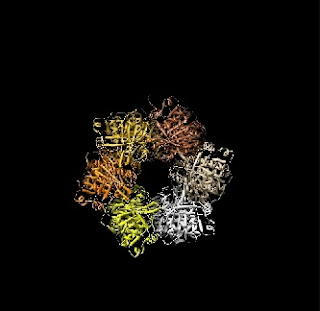 Cornell Professor Brian Wansink's study showed that people overpour into tall, thin glasses by 20 to 30 percent, compared with short, wide glasses, probably because of the vertical-horizontal optical illusion that people consistently perceive vertical lines as longer than horizontal ones of the same length. Photo credit: Jason Koski, Cornell University Photo High Resolution Image | Watching your alcohol intake? Use a taller glass. When pouring liquor this New Years Eve, people – even professional bartenders – will unintentionally pour 20 to 30 percent more into short, squat glasses than into tall, thin ones, according to a new Cornell University study. "Yet, people who pour into short, wide glasses consistently believe that they pour less than those who pour into tall, narrow glasses," said Brian Wansink, author of Marketing Nutrition and the John S. Dyson Professor of Marketing, Applied Economics and of Nutritional Science at Cornell. "And education, practice, concentration and experience don't correct the overpouring." |
""People generally estimate tall glasses as holding more liquid than wide ones of the same volume," Wansink said. "They also focus their pouring attention on the height of the liquid they are pouring and insufficiently compensate for its width."
The study, by Wansink and Koert van Ittersum, assistant professor of marketing at Georgia Institute of Technology, is published in the current issue of the British Medical Journal.
In separate studies, the researchers asked 198 college students (43 percent female) of legal drinking age and 86 professional bartenders (with average six years experience on-the-job; 38 percent female) to pour "a shot" (1.5 oz.) of spirits into either short, wide tumblers or tall, thin highball glasses.
The college students consistently poured 30 percent more alcohol into short, wide glasses than into tall, slender glasses, and the bartenders poured 20 percent more.
When the researchers asked one group of the college students to practice 10 times before the actual experiment, those students still poured 26 percent more into short than into tall glasses. When the researchers asked one group of bartenders to "please take your time," those bartenders took twice as long to pour the drink, but still poured 20 percent more into short, wide glasses than into tall, slender glasses.
Advice for New Years party hosts and for partiers who don't want to unintentionally overdrink? "Use tall glasses or glasses with alcohol-level marks etched on them," Wansink suggested. For parents? Use tall, thin glasses when pouring soda but short, wide glasses for milk and other healthful drinks. ###
Writer: Susan S. Lang, Cornell University. Contact: Brian Wansink Wansink@Cornell.edu 607-254-6302 Cornell Food & Brand Lab
Technorati Tags: New Years Eve and Cornell University or professional bartenders and Nutritional Science or Direct Evidence That Bioclocks Work By Controlling Chromosome Coiling and Quantum Computers superconducting circuit and Nanotube-producing bacteria show manufacturing promise












